Fix: Windows Does not Boot after the Windows Hypervisor Platform is Enabled
Your system may not boot when you enable the Hypervisor Platform if Windows, drivers, or the applications (which require Hypervisor) are outdated. Moreover, misconfiguration of the system’s BIOS may also result in the error at hand.
The issue arises when the user enables the Hypervisor Platform in the Windows Features and reboots the system as per the Hypervisor setup requirement but after reboot, the system goes into a boot loop with a black screen. The issue is not limited to a particular PC brand. In some cases, the issue was reported after a Windows update.
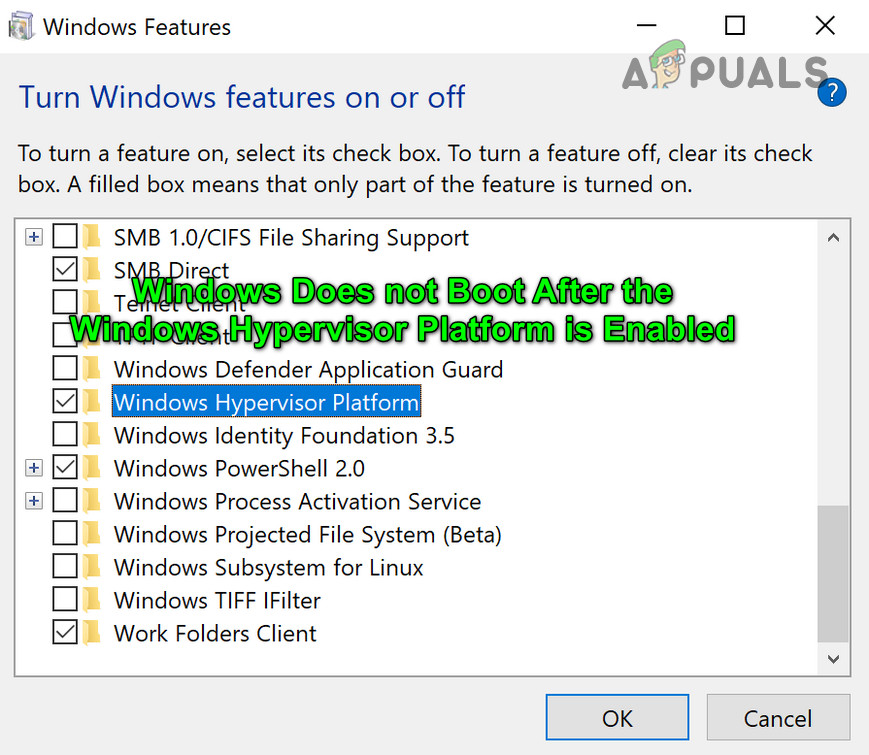
Before moving on with the solutions, either try to use Automatic Repair or you may have to boot your system into the Safe Mode and disable Hypervisor Platform (discussed in solution 1) so that you can try the solutions discussed in this article. Also, check if using a modern HDMI cable (compliant to your display driver) resolves the issue.
Solution 1: Disable / Enable Hypervisor Platform and Virtualization
The issue at hand could be a result of a temporary glitch of the OS modules and can be cleared by disabling and then re-enabling the Hypervisor Platform and Virtualization. The undermentioned instructions may slightly differ for some users.
- Boot your system in safe mode with networking.
- Then hit the Windows key and type Windows Features. Then select ‘Turn Windows Features on or off’.
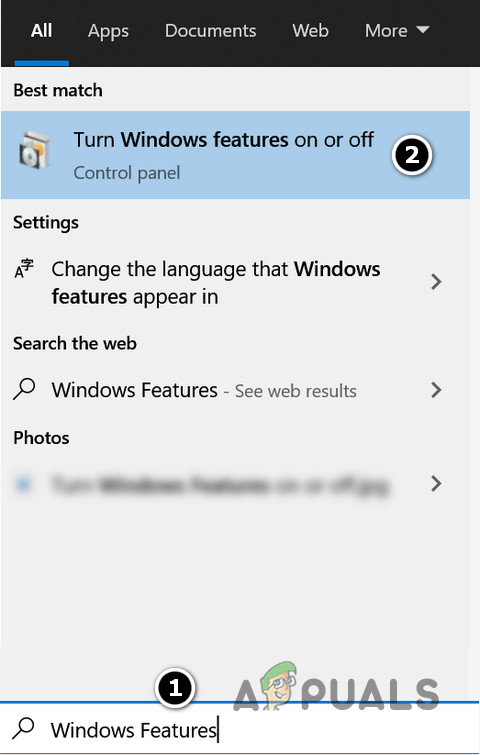
Open ‘Turn Windows Features on or off’ - Now uncheck the option of the Windows Hypervisor Platform and click on the OK button.
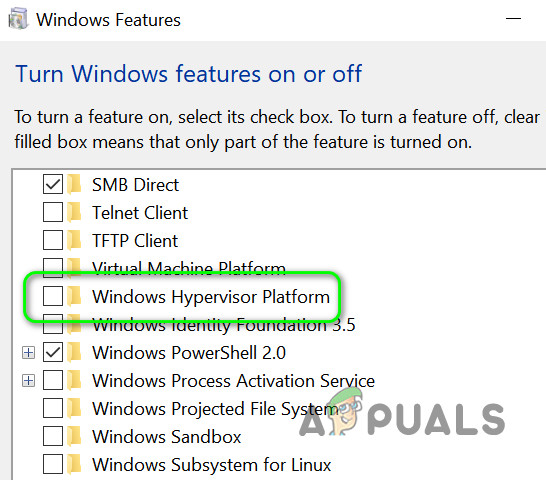
Uncheck ‘Windows Hypervisor Platform’ - Then click on the Windows button and click on the Power button.
- Now hold the shift key and in the Power Option shown, click on Restart.
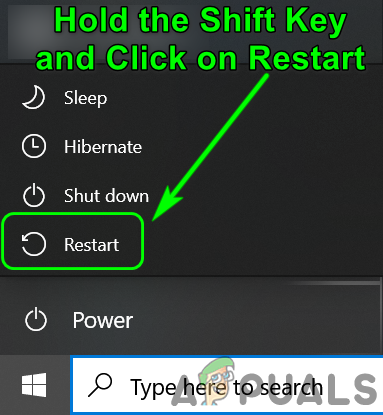
Hold the Shift Key and Restart Your System - Then in the Startup Options, select Troubleshoot and then open Advanced Options.

Open Advanced Options in the Startup Menu - Now select UEFI Firmware Settings and then click on the Restart button to boot the system into the BIOS.
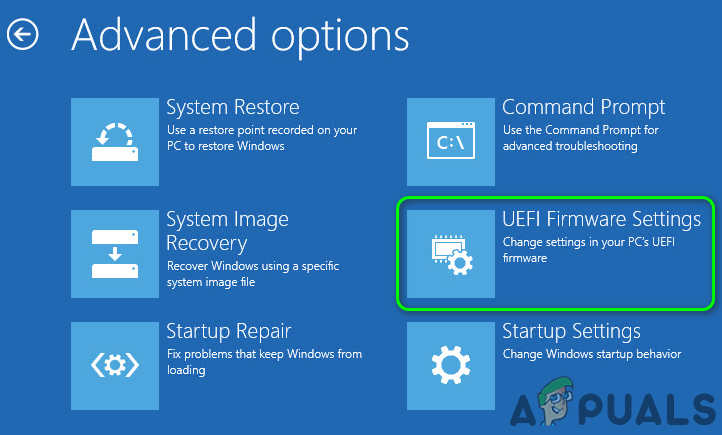
Open UEFI Firmware Settings in Advanced Options - Then, in the left pane, expand Virtualization Support and then select Virtualization.
- Now, in the right pane, uncheck the option of Enable Intel Virtualization Technology and then Apply your changes.
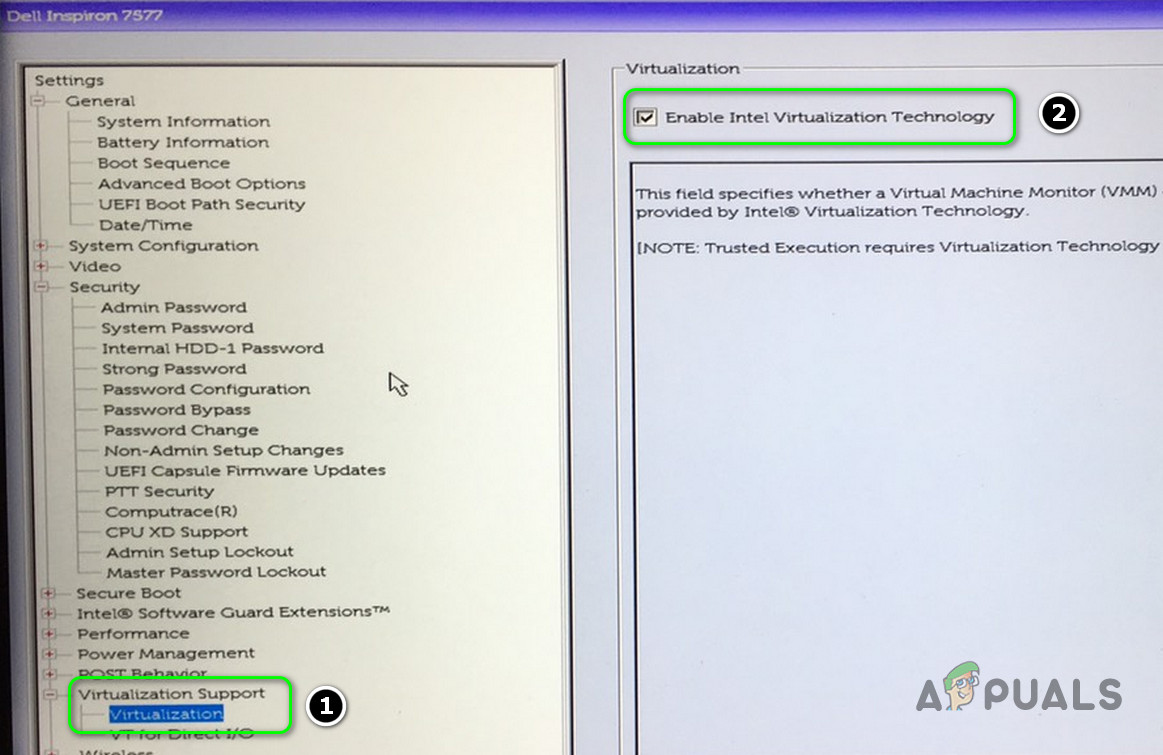
Uncheck ‘Enable Intel Virtualization Technology’ - Then boot your system into Windows and check if virtualization is off. If so, then boot your system into BIOS and enable Virtualization (steps 4 to 9).
- Again, boot your system into Windows and enable the option of Windows Hypervisor Platform (steps 2 to 3) and log out of the user account (do not restart, if asked to).
- Now log in to the user account and reboot your system to check if the system is working fine.
Solution 2: Update the System’s Windows, Drivers, and Applications (That Require Hypervisor) to the Latest Builds
You may encounter the issue at hand if any of the system’s Drivers, Windows, or BIOS is outdated as it can create incompatibility between the essential system modules. In this context, updating the Windows, drivers, and BIOS of your system may solve the problem.
- Update the Windows and drivers of your PC to the latest build.
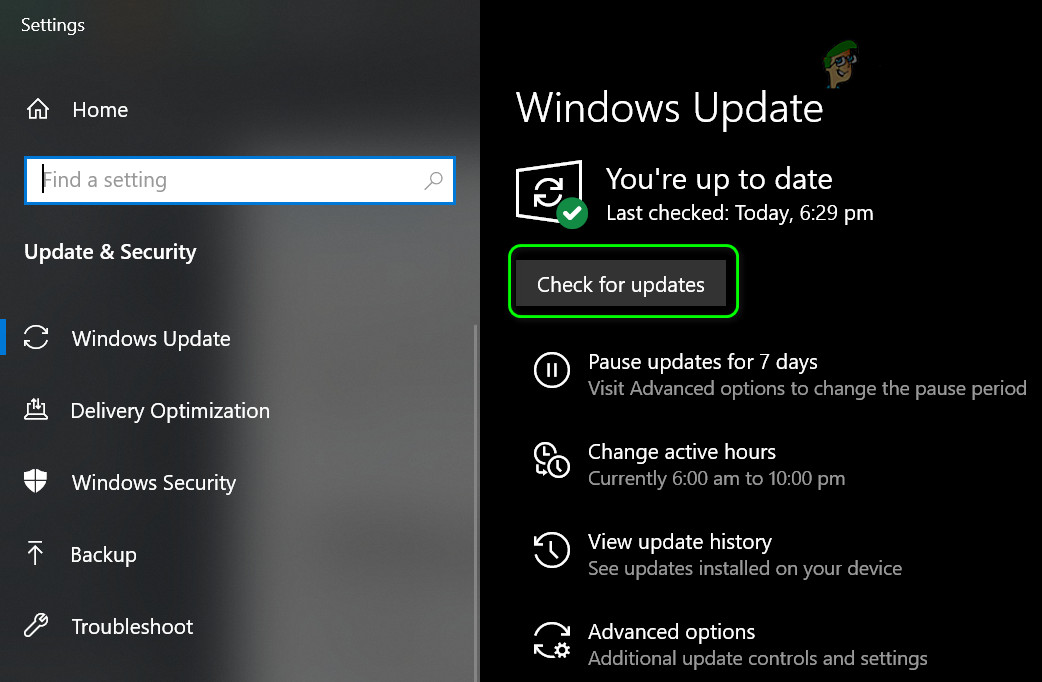
Check for Windows Updates - Now check if the boot issue is resolved.
If you are still encountering the issue, then make sure the applications (for example, Visual Studio or Android SDK) that require the Hypervisor feature are updated to the latest releases.
Solution 3: Disable Antivirus of Your System
You may encounter the issue at hand if the antivirus of your system is blocking access to a resource vital for the Hypervisor Platform. In this scenario, disabling the antivirus of your system may solve the problem. You may have to perform these steps in the safe mode of your system.
Warning: Proceed at your own risk as disabling the antivirus of your system may expose your system/data to threats that are not limited to viruses, trojans, etc.
- Temporarily disable the antivirus of your PC. Also, make sure that the Windows Defender is disabled.
- Then re-enable Hypervisor Platform (in Windows Features) and Virtualization (in BIOS) to check if the boot issue is resolved.
Solution 4: Disable / Remove the Conflicting Applications
The Hypervisor feature might not work if any of the applications on your system are hindering the operation of the Hypervisor platform. In this case, disabling or uninstalling the conflicting applications may solve the problem. Many users reported that the issue at hand was mainly caused by the OEM preinstalled applications (for example Asus Armoury Crate). You may have to clean boot the system to find the problematic application. For elucidation, we will discuss the process for the Armoury Crate application.
- Launch a web browser and navigate to the support site of the Armoury Crate.
- Then, in the Driver & Utility tab, select the OS of your system in the dropdown and download the Armoury Crate Uninstall Tool.
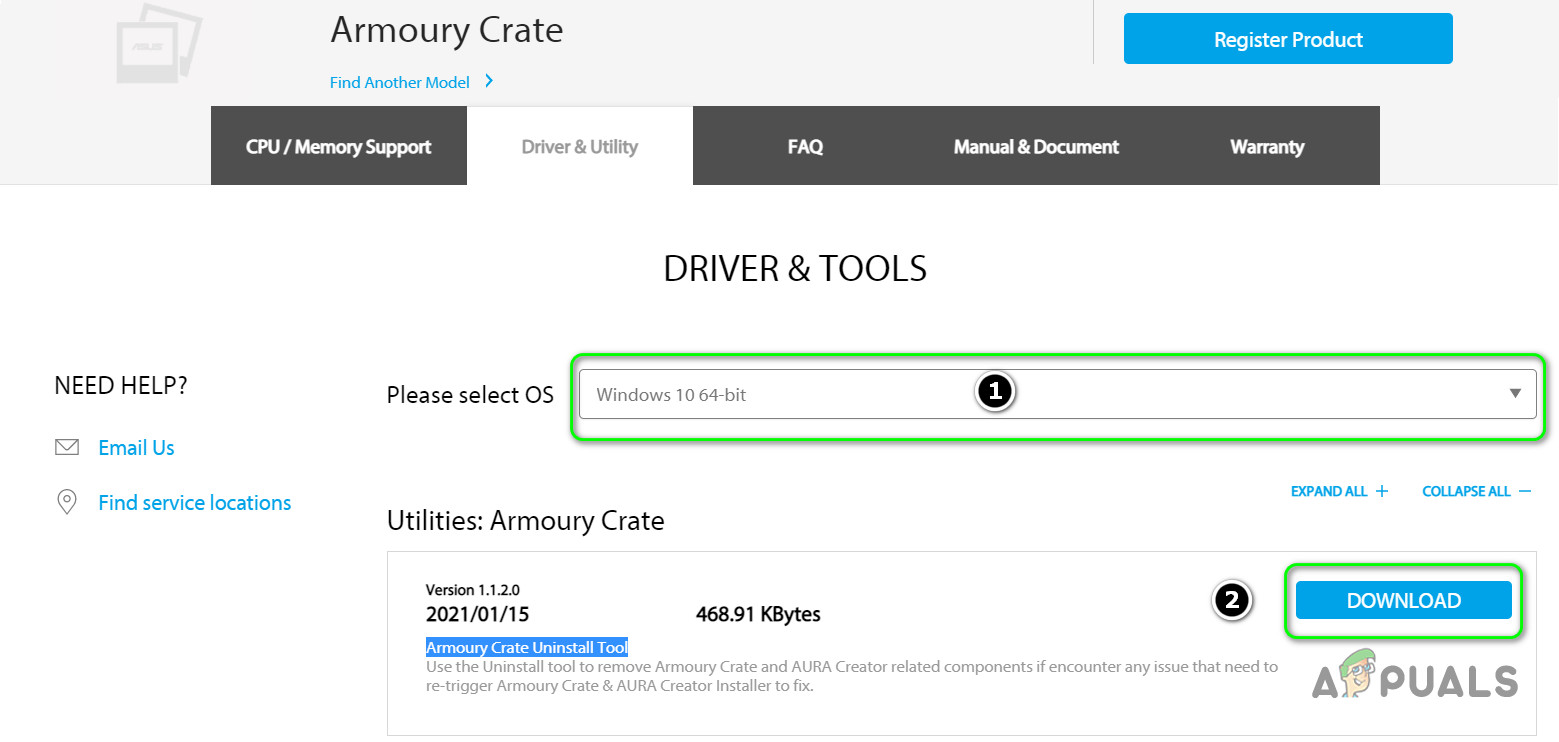
Download the Armoury Crate Uninstall Tool - Now unzip the downloaded file and open the extracted folder.
- Then launch the Armoury Crate Uninstall Tool.exe and follow the prompts to complete the uninstallation of the Armoury Crate.
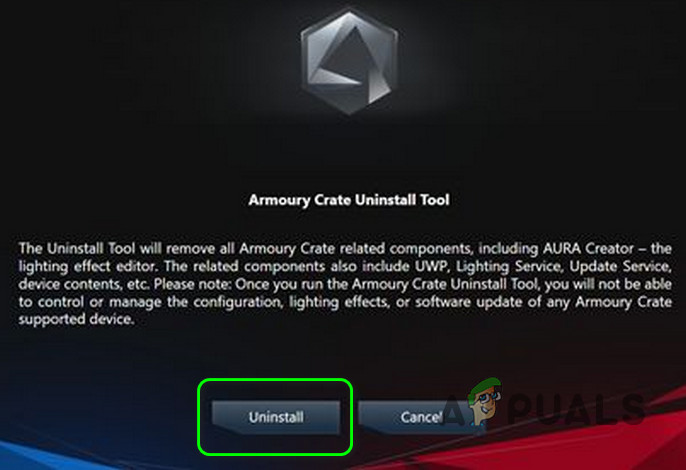
Uninstall Armoury Crate - Now check if the Hypervisor Platform issue is resolved.
- If not, then check if creating a virtual switch resolves the issue.
If the issue is still there, then check if removing (if installed) the Cisco’s VPN client, AMD Ryzen Master, Control Center (pre-installed tuning software), or any RGB/fan/keyboard controlling application resolves the issue.
Solution 5: Uninstall the Conflicting Updates or Revert to the Older Version of Windows 10
Microsoft has a known history of releasing buggy updates and the current Hypervisor issue may also be a result of the buggy update. In this case, uninstalling the buggy update (or reverting to an older version of Windows 10) may solve the problem.
- Hit the Windows keys and in the search bar, type Windows Update Settings. Then select Windows Update Settings.
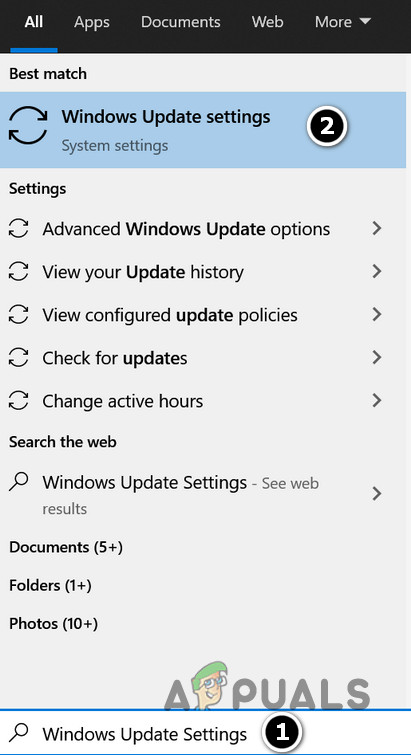
Open Windows Update Settings - Now, in the Windows Update tab of Settings, select View Update History and then open Uninstall Updates.
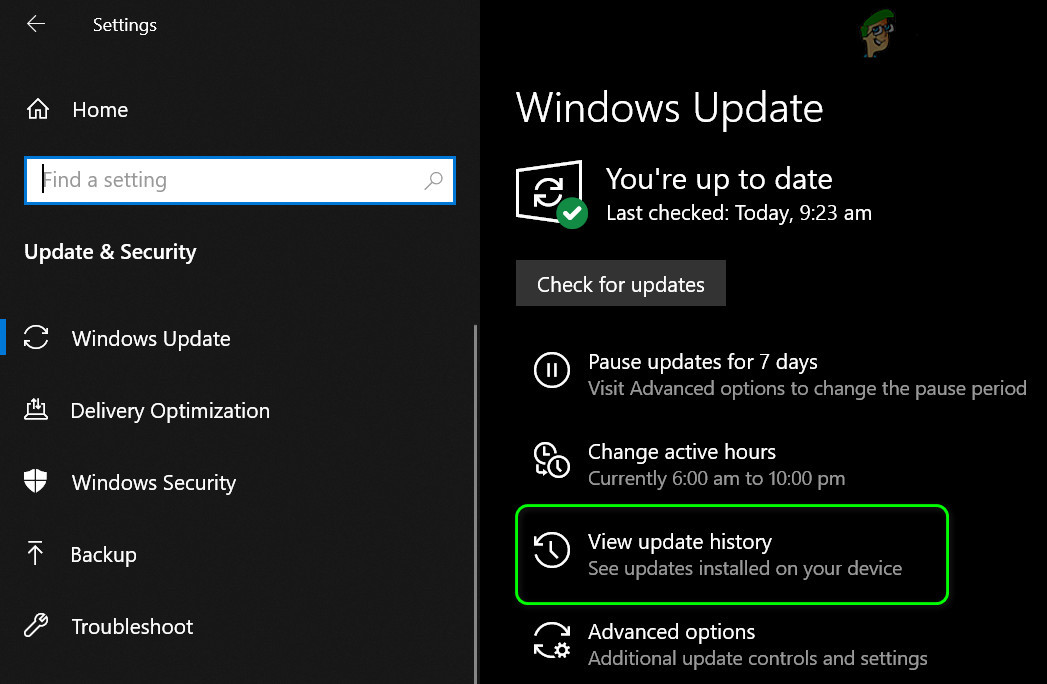
View Update History of Your System - Then select the problematic update and click on Uninstall.

Open Uninstall Updates - Now follow the prompts to complete the update’s uninstallation and check if the system is clear of the Hypervisor issue.
If you encountered the issue after a feature update, then you may have to revert to an older version of Windows 10.
- Now hit the Windows key and type Recovery Options. Then select Recovery Options.
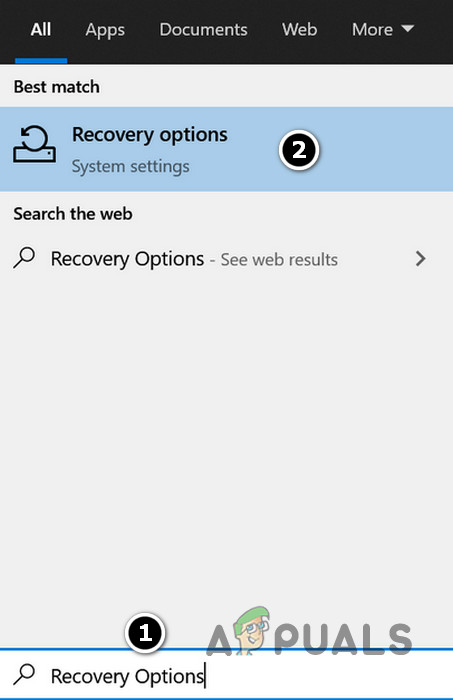
Open the Recovery Options - Then click on Get Started (under the option of Go Back to the Previous Version of Windows 10) and follow the prompts to revert to the older version to check if the system is clear of the boot issue.

Go Back to the Previous Version of Windows 10
Solution 6: Uninstall / Disable Conflicting Drivers and Devices
You may encounter the issue at hand if any of the drivers/devices conflict with the operation of the Hypervisor Platform. In this case, disabling the conflicting devices may solve the problem.
- Right-click on the Windows button to launch the Quick Access menu and choose Device Manager.
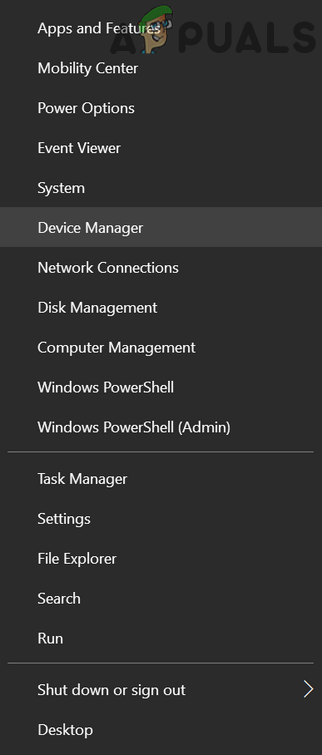
Open Device Manager of Your System - Then expand the Network Adapters option and right-click on your network card.
- Now select Disable and then click on Yes to disable the device.
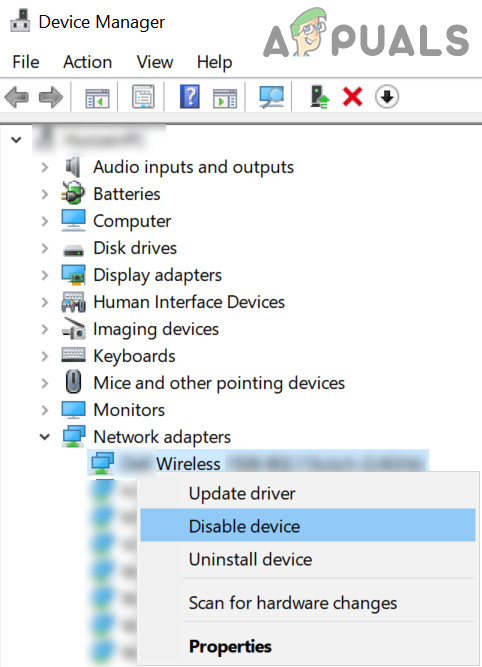
Disable the Network Card of Your System - Then check if the Hypervisor Platform issue is resolved.
If the issue persists, then check if disabling/uninstalling the following devices (if being used) resolves the issue (reported by users to create the issue). You may have to disable some of these devices in the system’s BIOS.
- AMD Vega 8 Driver (you may have to use AMD Clean Up Utility)
- RaLink Combo WiFi/BT Chip
- Realtek NIC
Solution 7: Create a New Boot Configuration Data (BCD) File
The Hypervisor Platform may cause a boot loop if the Boot Configuration Data (BCD) file is corrupt or missing. In this case, creating a new BCD file may solve the problem.
- Create a new BCD file for your system. You may have to use automatic repair or command line repair.
- Then check if the Hypervisor issue is resolved.
If that did not do the trick, then check if executing the following command in an Administrator Command Prompt and rebooting the system solves the problem (it will disable Hypervisor):
BCDedit /set hypervisorlaunchtype Off

But keep in mind that after sorting out the boot issue and to enable Hypervisor, you may have to execute the following command in an elevated Command Prompt (it will enable the Hypervisor Platform):
BCDedit /set hypervisorlaunchtype Auto
Solution 8: Edit the BIOS Settings
If any of the solutions did not do the trick, then the issue could be a result of the wrong configuration of the system’s BIOS. In this scenario, editing the system’s BIOS may solve the problem.
Warning: Advance at your own risk as editing the BIOS of your system requires a certain level of proficiency and if done wrong, you may brick your system and cause everlasting damage to your data.
Firstly, boot your system into BIOS and then check if editing the following settings resolve the Hypervisor issue. Keep in mind that all of these options may not be available to all users.
Update the BIOS to the Latest Build
- Before updating the BIOS, check if downgrading the system’s BIOS to an older version resolves the issue (especially, if the issue was caused by a BIOS update).
- If not, update the BIOS of your system as per your manufacturer. In some cases, you may have to download the BIOS on another system and use a flash drive to update the BIOS on the problematic system.
- After updating the BIOS, check if the Hypervisor issue is resolved.
Enable Execute Disable Bit
- Open the Advanced menu of BIOS and set the option of Execute-Disable Bit Capability to Enabled (some users may see the NX Mode option).

Enable ‘Execute-Disable Bit Capability’ - Now save your changes and then check if the Hypervisor issue is resolved.
Enable SVM and Set the UMA Frame Buffer Size to Auto
- In the Advanced tab of BIOS, enable SVM and check if the Hypervisor issue is resolved.

Enable SVM Support - If not, then check if setting the UMA Frame Buffer Size to Auto solves the problem.
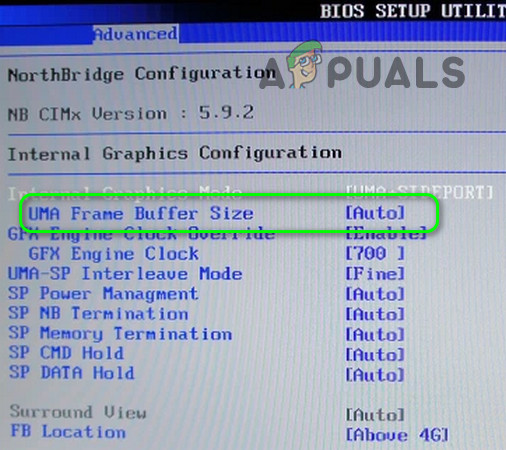
Set the UMA Frame Buffer Size to Auto - If that did not do the trick, then check if setting the UMA Frame Buffer Size value to 512 resolves the issue.
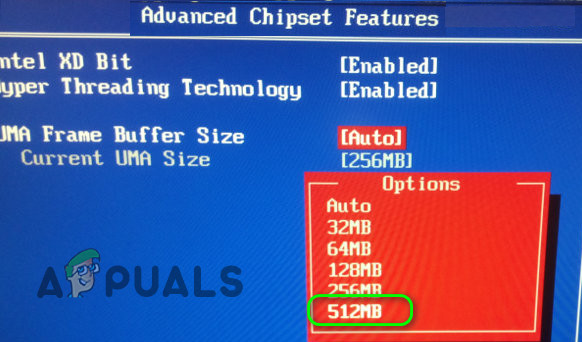
Set UMA Frame Buffer Size to 512
Disable IOMMU
- In the Advanced tab of the BIOS, set the value of IOMMU to Disabled and then save your changes.

Disable IOMMU - Then check if the Hypervisor issue is resolved.
Disable Secure Boot
- In the System Configuration (or Security) tab of your system, disable the option of Secure Boot, and save your changes.
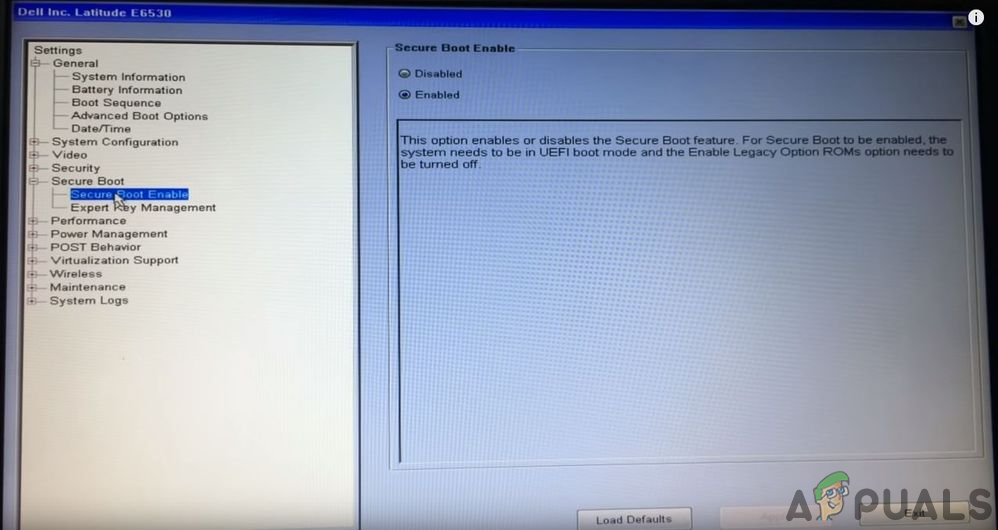
Disable UEFI Secure Boot - Then check if the Hypervisor Platform issue is resolved.
Disable Enhanced Biometrics
- In the Security tab of the BIOS of your system, disable Enhanced Windows Biometric Security and save your changes.

Disable ‘Enhanced Windows Biometric Security’ - Then check if the system is clear of the Hypervisor issue.
If the issue is still there, then check if resetting the BIOS to the default resolves the issue. If that did not do the trick, then make sure you are not using manual voltage & frequency for the CPU and check if that resolves the issue.
If the issue persists, then either try to perform a DISM scan or perform a clean install of Windows.




